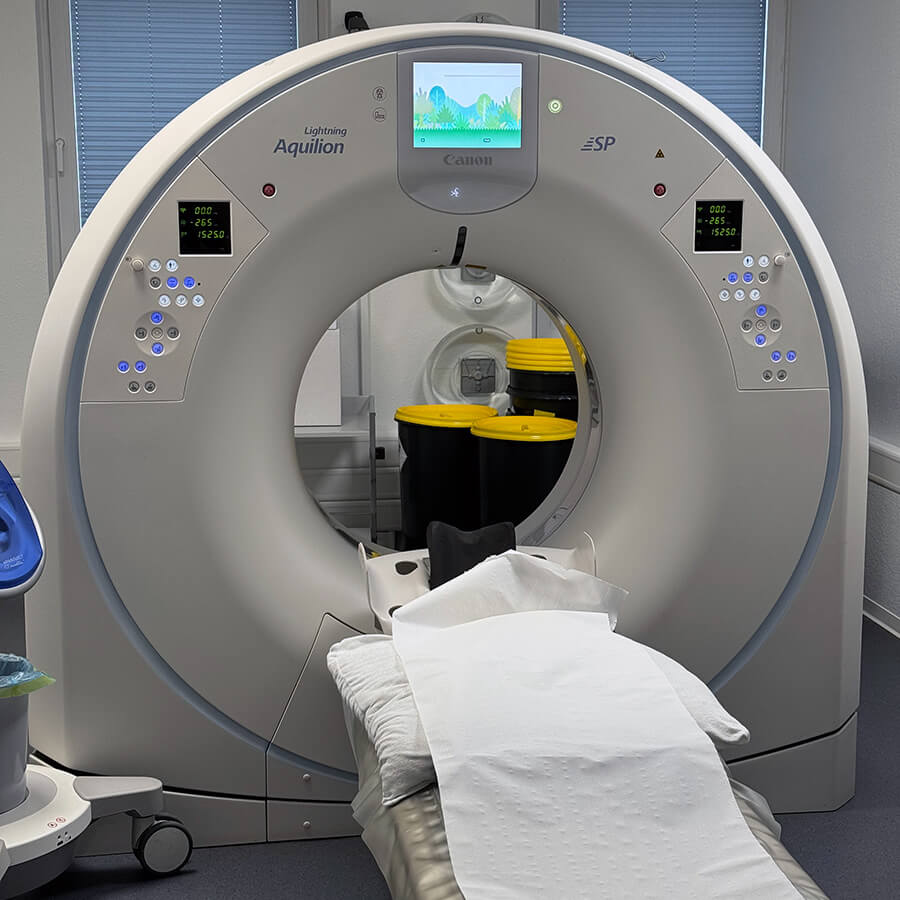Modern radiation therapy is a powerful weapon in the fight against cancer. It targets malignant cells, destroying them with high precision.

Modern radiation therapy is a powerful weapon in the fight against cancer. It targets malignant cells, destroying them with high precision.
Radiation used in radiotherapy is similar to that emitted by a smartphone or microwave oven but significantly more powerful. In radiotherapy, it is directed specifically at malignant cells, limiting their activity while simultaneously protecting surrounding tissues and organs.
For long-term recovery with a good quality of life and little to no side effects, controlling the tumor at the site of the primary disease is essential. At the Clinic for Radiation Therapy and Radiation Oncology, led by Professor Dr. med. Karl-Axel Hartmann at Marienhospital in Duesseldorf, high-precision radiotherapy is employed.
The clinic specializes in interdisciplinary radiotherapeutic treatment of malignant diseases, as around 50 percent of such cases require this form of therapy. The clinic is equipped with three radiation devices—so-called linear accelerators—featuring cone-beam CT technology. Additionally, it utilizes the ExacTrac Dynamic Surface® system for high-precision irradiation (stereotactic radiotherapy) of the brain and torso.
Radiotherapy as an Interdisciplinary Discipline
High-precision irradiation is carried out in close coordination with specialists. This has led to collaborations among clinics within the Interdisciplinary Oncology Center (IOZ), which was established at Marienhospital in Duesseldorf in 2002. High-precision radiation therapy is used for the treatment of small bronchial carcinomas, lung, adrenal gland, liver, bone, and brain metastases. It is also applied in stage 2 rectal cancer to shrink tumors before surgery and sterilize the affected area, facilitating the surgical procedure. After surgery, radiotherapy helps eliminate remaining cancer cells and prevent recurrence. In cases of colon cancer, radiation therapy is combined with chemotherapy to increase the chances of recovery.
Careful coordination of radiation treatment before or after surgery, as well as in combination with systemic therapy, is crucial. Physicians regularly hold oncology conferences at the Interdisciplinary Oncology Center.
The three linear accelerators at Marienhospital in Düsseldorf are equipped with cone-beam CT and the ExacTrac Dynamic Surface® system for high-precision irradiation. Radiotherapy is delivered with millimeter accuracy, thanks to an AI-supported positioning system with a thermal imaging camera. This system monitors the patient’s body surface, detecting even the smallest movements and breathing changes. An external X-ray device provides precise anatomical details. As a result, tumor irradiation is conducted with minimal impact on healthy tissues (1-2 mm).
Radiation therapy is as effective as surgical tumor removal but less invasive, making it suitable even for elderly and severely ill patients. The procedure is painless and imperceptible. The use of artificial intelligence enhances treatment efficiency, enabling the irradiation of multiple tumor sites simultaneously. This helps manage metastatic cancer and prevents it from becoming chronic, ensuring long-term quality of life for patients.
How Does Radiation Therapy Work?
Cancer cells are destroyed using high-energy radiation generated by a linear accelerator. Electrons are accelerated in a vacuum and then either directed outward or collide with a solid surface, producing photon (ultra-hard X-ray) radiation used in treatment. The radiation oncologist precisely adjusts the device to the treatment area, defining the boundaries and depth of exposure. The radiation is delivered from multiple angles, which helps protect healthy tissue while achieving the most effective dose. High-energy radiation damages the genetic material of cancer cells, leading to their destruction.
Source: Catholic Clinical Complex
